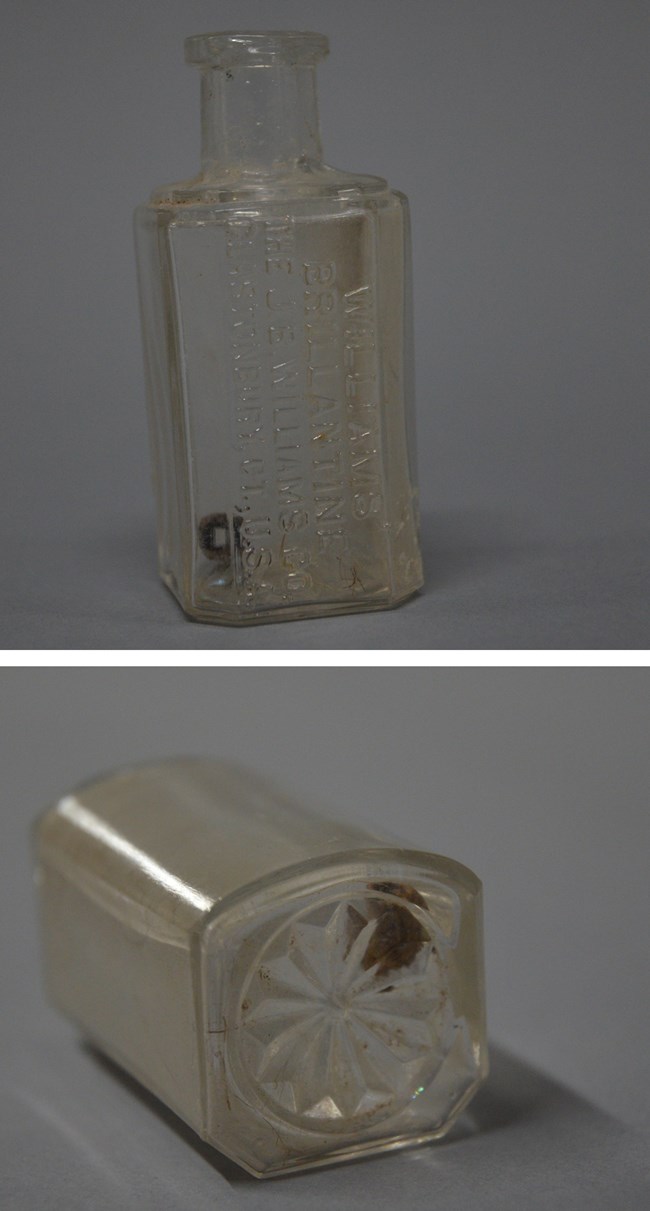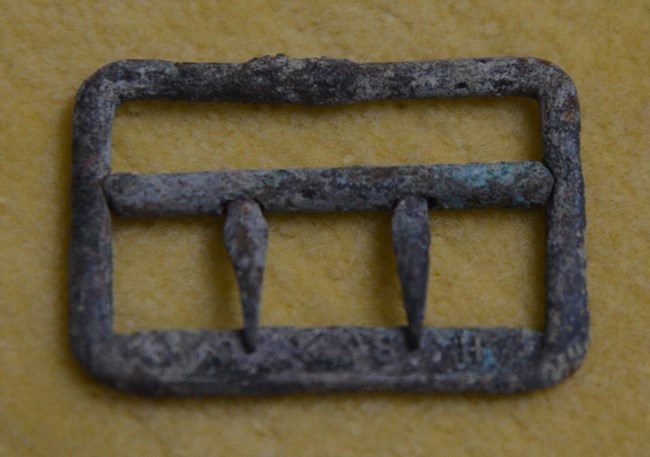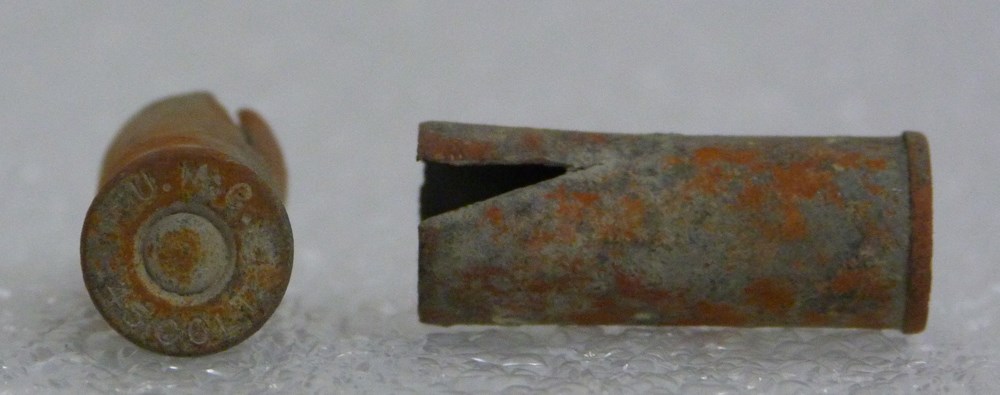|
The Buffalo Soldiers of Company L were stationed in Skagway for three years from 1899-1902. Despite the "rough and tumble" nature of those early days, we're still finding hints and clues about the life they lived here. These are just some of the artifacts associated with the men of Company L that park archeologists have excavated.

NPS photos/K. Pontius Artifacts (top to bottom): KLGO 16356, KLGO 16354, KLGO 49195, and KLGO 48180 Eagle Buttons What are they? Why do we think they may have belonged to Company L? 
NPS photo/K. Pontius. Artifact: KLGO 48934 Brillantine Bottle What is it? The bottle is approximately 4 inches tall. On the side upraised text reads: WILLIAMS' Where did it come from? Why do we think it may have belonged to someone in Company L?
Return to the Company L artifact gallery 
NPS photos/K. Pontius. Artifacts (top to bottom): KLGO 16480 and KLGO 14186 (front and back views) Helmet Ornament and Ventilator Socket What are they? 
NPS photo/K. Pontius. Artifact: KLGO 14204 Buckle What is this? 
NPS photo. Artifact: KLGO 47882 .45 Cartridges What are they? |
Last updated: June 11, 2021
